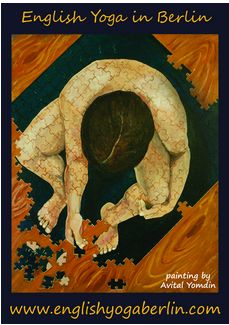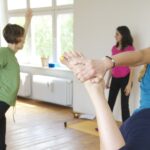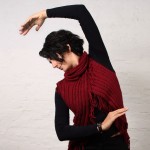Most probably, we have all heard the term “grounded” at some time in our lives. To ‘be grounded’ is a term that describes an experience of presence with whatever it is that we are doing at the moment. As the word suggests, I like to think of it as ‘being aware of my feet on the ground.’ When I am not grounded, I feel myself lost in thought and distracted from the realms of my mind- forgetting the body. When I am grounded, I notice things such as my rib cage moving with my breath, the sensations in my feet and the dryness of my lips. In other words, I am embodied- aware of what is happening in my body.
Most of us tend to be lost in thought throughout our days. As we lose ourselves in thought we are usually reliving past moments of our lives; imagining future ones; or worrying about possible scenarios in an alternate reality. To sum it up: as we lose ourselves in thought we are no longer living in the present – in the here and now.
The Nature of the Mind
It is normal for the mind to jump from one place to another making thousands of associations every minute. It is normal to associate the past with the possible future and alternative scenarios. There is nothing wrong with a mind that does that. On the contrary, it is even essential to our survival. It is the reason we have been able to make so many technological wonders and many more modern life marvels. However, if we find ourselves predominantly in the ‘lost in thought’ mode, life becomes tiring and seems to fly right past us. Taking a moment to pause, to slow down and experience the ‘Now’ is essential to living a life with quality.
How Can I Ground Myself?
There are many ways to ground oneself. These include practicing meditation and mindfulness, slowing down, becoming aware of our breath, and awareness of body sensations. The first step to grounding is to actually notice that we have lost ourselves in thoughts. This first step sounds much easier than it is, because we spend most of our time literally “lost“. Performing this first step is already a moment of awakening. Next, we could choose our favorite grounding technique to apply in order to become more embodied. I use several grounding techniques during our yoga classes in Kreuzberg. Here is one of my favorites:
54321
5 – Name five things that you see. Do not just think ‘this’ and ‘that’, but instead use their actual name such as green grass, white cloud, brown shoes.
4 – Name four things that you feel. Name sensations rather than emotions. Ie. the air in my nose, my heels on the floor, my shirt on my skin.
3 – Name three sounds that you hear.
2 – Name two odors that you smell. Some people find smelling challenging. If that is the case, you can also name two smells that you like instead.
1- Name one thing this experience is giving you. For example, ‘this experience is giving me a moment to slow down; presence; connecting with my body, etc.
How to practice 54321

You can practice this grounding exercise any time you feel the need to ground. This is also a very good exercise if you feel the onset of a panic attack or anxiety. I like to start my yoga practice with 54321 as I ground myself and am more present during the session. Another way to practice is while taking a walk. You can do 54321 on repeat and become more aware of your surroundings and your body sensations.
Haven’t we all had the experience of being in a beautiful place on holiday wishing to enjoy the moment, and instead have been worrying incessantly about some other aspect of our life? When this happens to me, I always return to 54321 and take in the sounds, smells, sensations, and sights!
About the author:
Pinelopi specializes in Hatha Yoga. Her yoga Kreuzberg Berlin classes are open for and welcoming to beginners. She offers Berlin business yoga, private yoga classes for people struggling with chronic pain, yoga courses, retreats and workshops. She is currently deepening her knowledge through Leslie Kaminoff’s Yoga Anatomy course and training to become an Alexander Technique teacher.






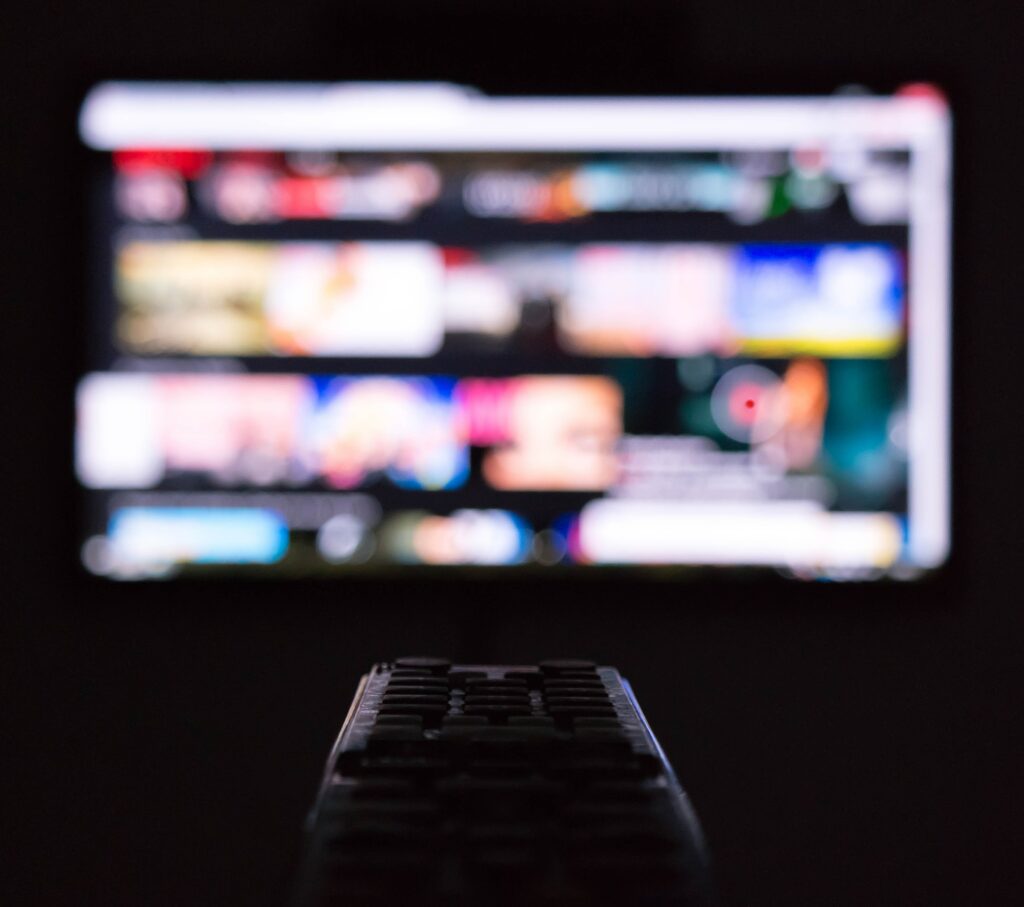


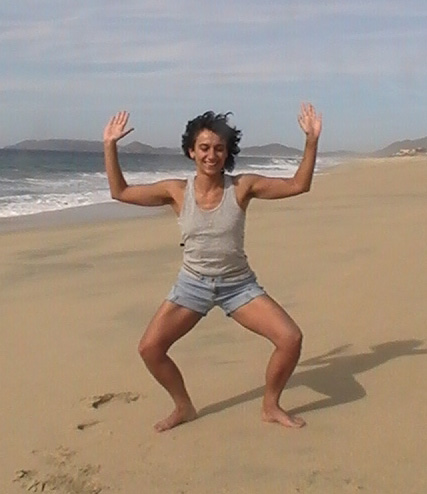
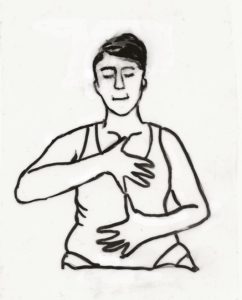
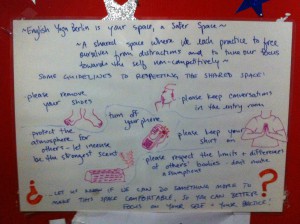
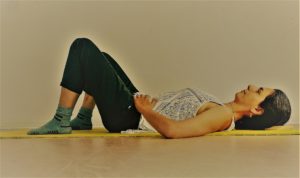 Lay down on your back with your head placed on top of some books for support (5 to 8cm as a starting point). Put the soles of your feet on the floor with your knees facing upwards towards the ceiling. Place your hands on the belly with the elbows pointing outwards
Lay down on your back with your head placed on top of some books for support (5 to 8cm as a starting point). Put the soles of your feet on the floor with your knees facing upwards towards the ceiling. Place your hands on the belly with the elbows pointing outwards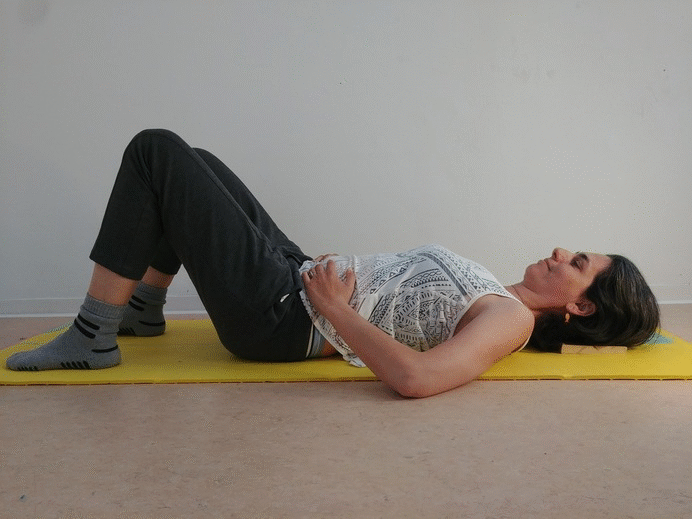
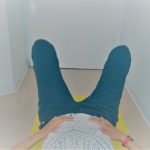
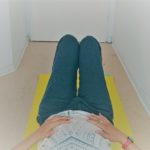 If you feel that you wanted to bring the knees inwards, you could try placing your feet closer to each other. If you feel that you wanted to let your knees go outwards, you could place the feet a bit further apart from each other. Do these changes to your feet make it easier for your knees to be pointing upwards without tension? Did this also bring a subtle change to the pathway of weight distribution in the soles of your feet?
If you feel that you wanted to bring the knees inwards, you could try placing your feet closer to each other. If you feel that you wanted to let your knees go outwards, you could place the feet a bit further apart from each other. Do these changes to your feet make it easier for your knees to be pointing upwards without tension? Did this also bring a subtle change to the pathway of weight distribution in the soles of your feet?